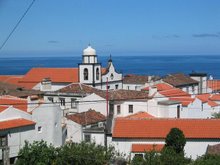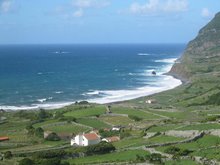(For non-Scottish readers, FCS, SNH and the CC are the Scottish government agenices responsible respectively for forestry, nature conservation and small farms. Gaelic is a language spoken by a small minority of Scots: all Gaelic speakers also speak English.)
 |
| Roughcastle Community Wood - what's the Gaelic for "inspirational"? |
What? Gaelic, Scotland's national language?
What RUBBISH!
Quite apart from the absurdity of describing as a "national language" a tongue spoken by fewer than 2% of the nation's population, what the Gaelic cultural imperialism zealots persistently overlook is that there are vast areas of Scotland where Gaelic has NEVER been spoken, namely the green and yellow bits on the map below:-
The green bits just happen to include the country's capital (Edinburgh), biggest city (Glasgow) and the bits where two thirds of its population lives so it seems John Angus MacKay of Bord na Gaidhlig needs a basic lesson in the linguistic history of Scotland. Here it is - this is not very difficult.
The aboriginal language of Scotland was what linguists call a "P-Celtic" language, the closest surviving example of which is modern Welsh. In the first millenium AD, Scotland was invaded by Gaels from Ireland speaking Gaelic (a "Q-Celtic" language) and Angles from England speaking - wait for it - English (a teutonic language). Gaelic spread east and south while English spread north and west. The aboriginal P-Celtic language was snuffed out between this linguitic pincer movement. The high water mark of Gaelic's spread was as coloured pink on the map. That was in the 11th century AD. Since then, it has been retreating back north and west in the face of English (green on the map) to the point where Gaelic is now spoken by only about 60,000 people - 1.2% of the population - in the very far north west and the Western Isles.
The following picture illustrates what a polyglot culture Scotland in fact has, historically speaking. It's of a road-sign near Inverness:-
 |
| Picture credit The Poss |
Why? Judged by the numbers of speakers in Scotland, it would make as much sense to translate all these names into Punjabi or Polish!
I agree with David and I'm going to hit "Publish" now before I get any more ventilated about this.






2 comments:
"What’s the world’s sexiest accent?" (for speaking English).
Article:
http://www.lonelyplanet.com/blog/2011/02/15/whats-the-worlds-sexiest-accent
Graph:
http://www.lonelyplanet.com/blog/wordpress_uploads/2011/02/language_graph1.jpg
According to this shamelessly unscientific poll -- which I take with not just a grain but in truth a whole box o' salt -- Scottish is 4th, Portuguese 8th. Does this mean you two have the best of both worlds?!?!?
Nice colourful map of where Gaelic has never been spoken. Shame its complete cac.
Post a Comment